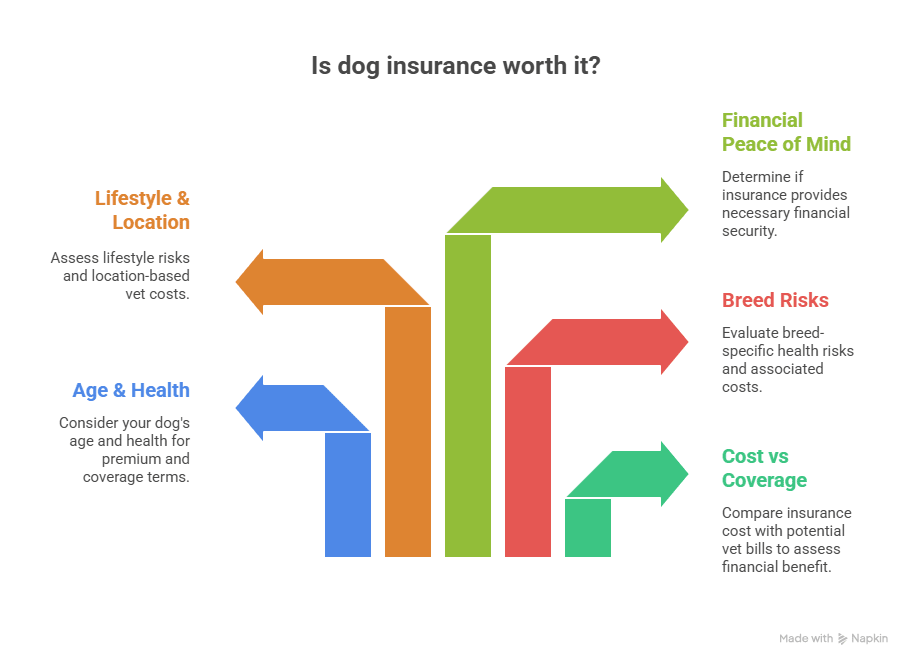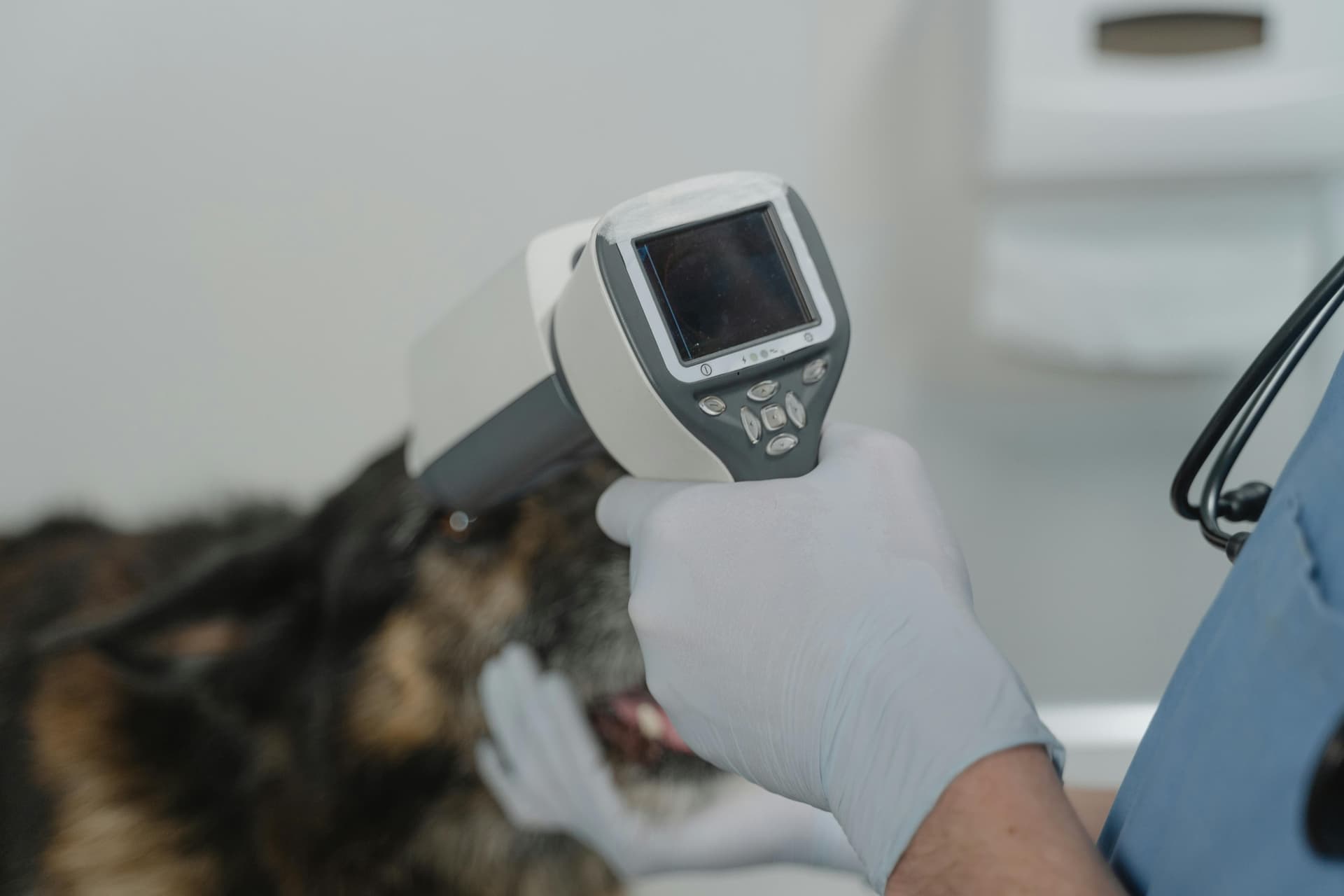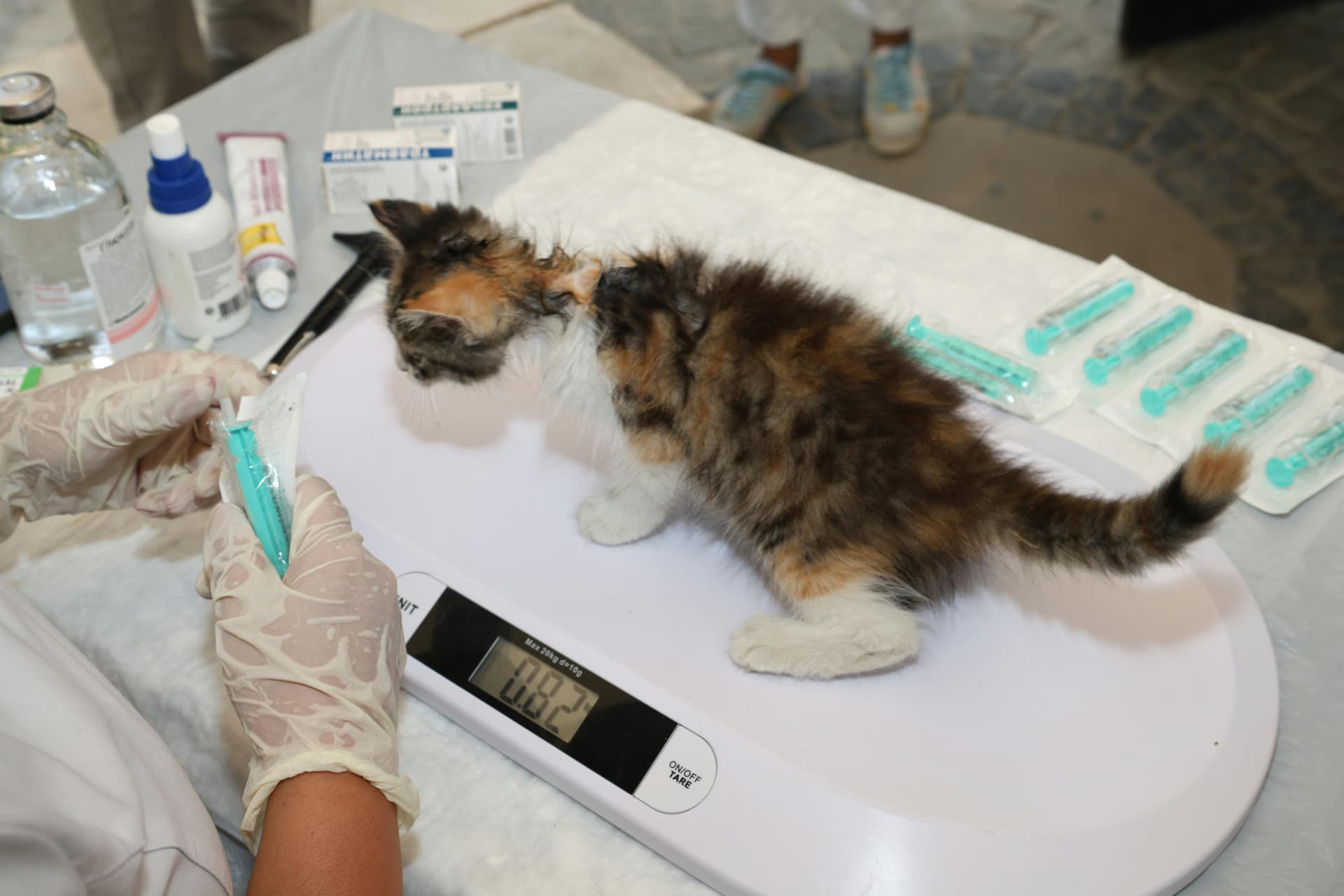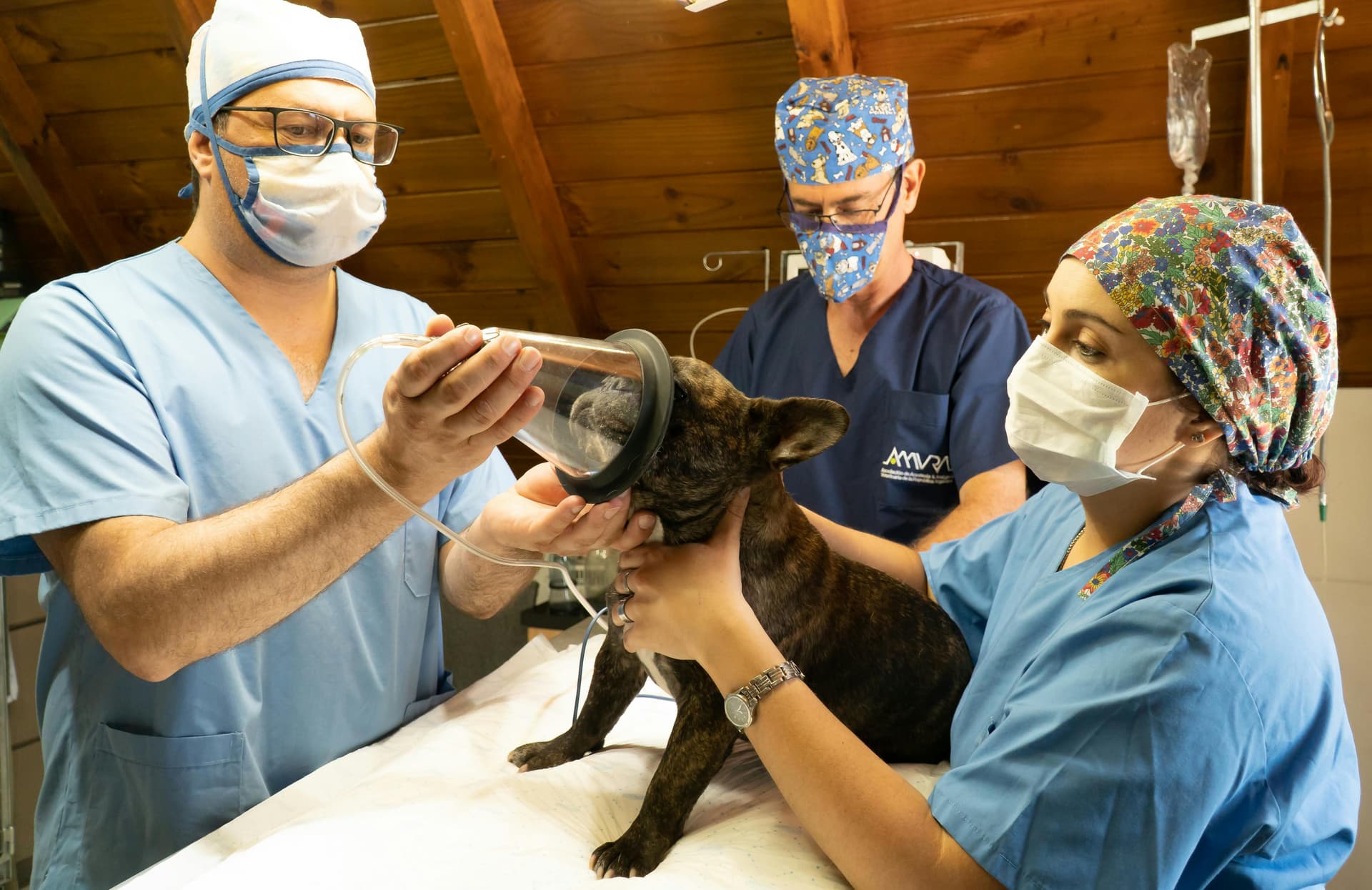Your dog yelps. The vet’s face hardens. “We need to act now.”
In that moment, you’re not thinking about your deductible or coverage limits. You’re thinking about numbers: $1,800… $4,000… $7,000. This is the reality of emergency vet costs. The question every dog parent eventually asks is:
“Is dog insurance worth it?”
At PetCoverage.ai, we help pet parents decode these tough questions with data, real stories, and cost breakdowns. The truth is, it depends. The right answer comes down to five key factors that shape whether insurance will protect you, or leave you stressed when you need help the most.
1. The Cost of Care vs. the Cost of Coverage
Vet bills are climbing every year. A torn ACL can run $3,000 in a small town or $6,000 in a metro ER. Cancer treatments often stretch into five figures. Without coverage, many families end up facing heartbreaking decisions.
More than 50% of U.S. pet owners report skipping or declining veterinary care in the past year due to cost concerns.
Pet health insurance for dogs cost is often far less than the surprise of paying out-of-pocket for surgery or long-term treatment. Insurance spreads that risk into predictable monthly payments. The right plan means you can say “yes” to care instead of asking “can we afford this?”
Action tip: Run the math. If a $5,000–$10,000 bill would cause financial strain, insurance isn’t just worth it, it’s peace of mind.
2. Your Dog’s Age and Health
Timing matters. Puppies and young dogs are cheaper to insure and less likely to have exclusions. Wait too long, and anything that’s diagnosed before enrollment is marked “pre-existing”—not covered.
Older dogs can still benefit, especially if you worry about age-related issues like arthritis, diabetes, or cancer, but premiums will be higher.
Action tip: If your dog is under 6, enroll now to lock in better coverage and lower premiums.

3. Breed-Specific Risks
Not all dogs face the same health outlook. French Bulldogs are prone to airway issues. Labs often struggle with hip dysplasia. Golden Retrievers are at higher risk for cancer. These conditions aren’t just medical, they’re financial, often costing thousands in surgery or long-term treatment.
If you’re asking what are the most common vet costs? for these breeds, the answer is often orthopedic surgery, cancer treatment, or ongoing medication, all of which can be partially covered with the right insurance.
Action tip: Know your breed’s risks. If your dog is high-risk, insurance is more than worth it—it’s essential.
4. Your Lifestyle and Environment
Where and how your dog lives shapes risk. An adventurous pup that hikes, swims, and explores faces more accidents than a lapdog who rarely leaves the sofa. Even your location matters: emergency vet costs vary dramatically by zip code.
Bankrate’s 2025 review found that age, breed, and location are consistently the strongest cost drivers for insurance, because they directly reflect the risk of pricey emergencies in your area.
Action tip: Ask your vet what common emergencies cost locally, then compare that to your potential out-of-pocket costs with and without insurance.
5. Your Financial Peace of Mind
The last factor is the most personal: your budget. Could you cover a $7,000 bill tomorrow without breaking savings or going into debt? For most families, the answer is no.
Insurance isn’t just about numbers; it’s about removing hesitation. When minutes matter, you shouldn’t be doing math. The right plan means you can act fast, without financial fear holding you back.
Action tip: If you don’t have a strong emergency fund set aside, insurance acts as your safety net.
Case in Point: Real Costs, Real Life
Kisses, a 4-year-old terrier, had three separate issues in one year: an ear infection (~$200), pancreatitis (~$900), and a tooth abscess (~$2,500).
With no insurance, her family would’ve paid ~$3,600 out of pocket.
With a $500 deductible, 70% reimbursement, and $2,500 annual limit, they paid ~$1,706.
With a $250 deductible, 80% reimbursement, and $5,000 annual limit, they paid ~$1,472.
The right levers, deductible, reimbursement, and annual limit—cut their costs in half.
The Hidden Risk of Cheap Pet Insurance
A low premium can look tempting, but beware the fine print. Some plans quietly exclude:
Exam fees ($75–$250 per visit, even in emergencies)
Cancer sub-limits (like $2,500 max, even if your annual limit says $10,000)
Bilateral rules (if one knee or eye has issues, the other side isn’t covered)
Lengthy waiting periods (anything that happens during the wait becomes “pre-existing”)
Cheap plans don’t save money, they cost more when you need them most. If you’ve ever asked yourself “is pet insurance worth it?”, the answer depends on understanding these exclusions before you commit.

Frequently Asked Questions (FAQs)
1. Is dog insurance worth it for a healthy dog?
Yes, because no dog stays healthy forever. Enrolling while your pup is healthy ensures more conditions are covered later.
2. Can I use any vet or ER?
Most insurers let you use any licensed vet, specialist, or ER. You pay the bill, then submit for reimbursement.
3. What’s the best plan type?
Accident & Illness is the true safety net. Accident-only is cheaper but limited, and wellness add-ons only cover predictable care.
Key Takeaways
When asking “is dog insurance worth it?” the answer depends on your dog, your budget, and your risk tolerance. Here are three takeaways:
Vet bills rise faster than savings: Emergency vet costs can range from $3,000 to $10,000+, leaving families unprepared without coverage.
Timing shapes value: Enrolling while your dog is young and healthy avoids exclusions and keeps premiums lower.
Peace of mind is priceless: Insurance means saying “yes” to care without financial hesitation.
Don’t wait until you’re in the ER to discover gaps in your policy. Upload your plan for a free review at PetCoverage.ai, and see if your coverage will hold up when it matters most.
Stay connected with us on Facebook, Instagram, TikTok, and LinkedIn for real stories, claim-time checklists, and transparent cost breakdowns to protect both your pet and your wallet.






